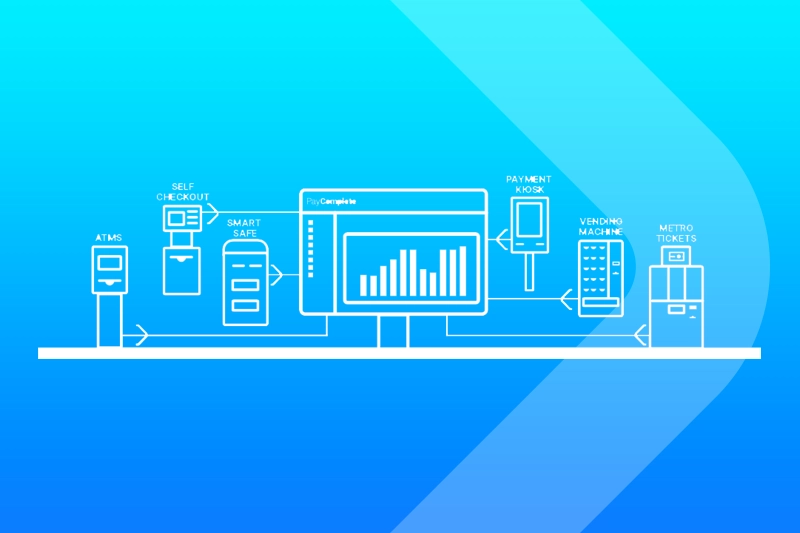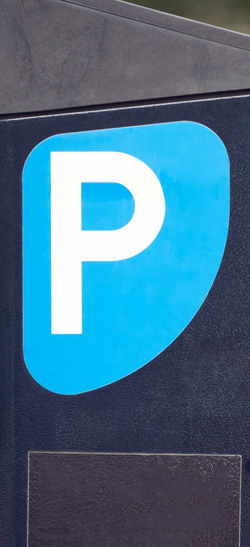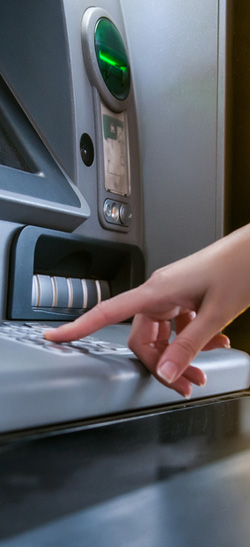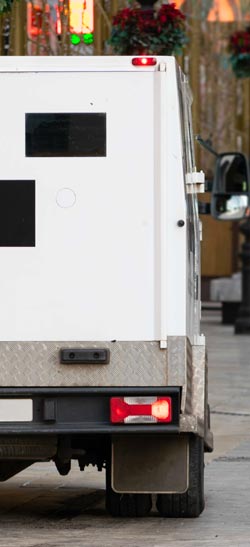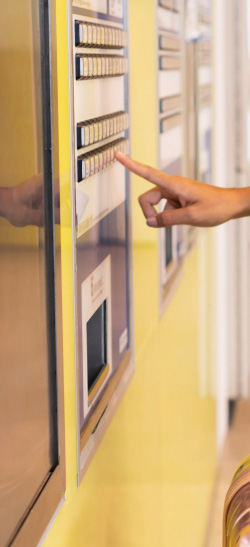Safes and vaults have long stored civilisations’ most valuable physical treasures.
They can be both physically impressive and technologically sophisticated – a true embodiment of security.
They have even inspired philosophical musings. For example, the philosopher Ludwig Wittgenstein wrote:
“Philosophy is like trying to open a safe with a combination lock: each little adjustment of the dials seems to achieve nothing, only when everything is in place does the door open.”
And the journalist Peter De Vries once wrote:
“The universe is like a safe to which there is a combination. But the combination is locked up in the safe.”
Today, there is more than one kind of safe and vault. Let’s look at what these are and how they work.
What is a Safe?
A safe is a physical stronghold for protecting valuables from theft and damage.
They have a long history and have appeared in many forms over the centuries. But today they usually come in some form of a free standing metal cabinet with a complex locking mechanism, opened a digital keypad.
The specific content stored in a safe (cash, important documents, jewellery, USB sticks, and other valuables) often influences the type of safe used.
This is because different safes provide different security levels, varying fire protection to withstand temperatures, or certification requirements. For example, gun owners should store guns in a gun safe which meet specific regulations in relation to security, location, accessibility, etc.
Safes can be customised to fit specific security needs. In some cases, this means meeting instalment specifications. This not only makes safes more secure, but can also reduce insurance premiums in the instance of other unforeseen circumstances.
The Inaccessible Safe Paradox
Safes should be inaccessible to people without authorised access to them. However, they also need to be accessible in the event of a lost key, broken lock mechanism, or forgotten passcode.
So, the important point about most safes is not just how strong they are, but what mechanical and electrical tools are used to access and lock them.
The combination lock is perhaps the most common type key lock found in commercial safes used for private safe owners. Large business safes and bank vaults often rely on a more complex electronic locking mechanism to withstand attacks, such as robbery.
What’s the Difference Between a Safe & Vault?
Safe and vaults share a similar purpose: providing security for assets against theft and damage.
However, there are some significant differences between them.
Firstly, vaults are generally much larger than safes (they can essentially be rooms). This means vaults are not mobile or moveable, which ensures maximum security.
Safes, on the other hand, can be typically moved and concealed. Though they can be installed into rooms or floors, becoming a residential security container, but they can be uninstalled if needed.
What is a Safety Deposit Box?
A safety deposit box is an individual locked container (usually metal) used to protect valuables. They are typically stored in bank vaults, private deposit safes, or post offices.
Like safes, safety deposit boxes are locked with biometric locks and mechanical locks and accessed with keys, codes or biometric data (i.e., iris or fingerprint identification).
Unlike safes, safety deposit boxes’ contents are not frequently accessed. There is often a much higher degree of security as depository safes are contained within a vault.
Types of Safes
Fire Resistant Safes
Fire safes (also known as a fire-resistant safe) are different types of safes designed to withstand different levels of high temperatures and even flame exposure.
Fire safes are ideal for protecting important legal documents or digital storage devices (USB sticks, hard drives, etc.) as they are fireproof.
There are different levels of fire resistance available for fire safes, ranging from 30 minutes to 120 minutes. Fire ratings, such underwriters laboratories (UL) ratings used in Europe, are a gauge of this resistance. Generally, the higher the resistance, the more expensive the safe will be.
Burglary Safes
Burglary safes (or burglary-resistant safes) are safes primarily used for residential security containers protecting against theft and forced entry. They are one of the most common types of safes and vaults.
These safes are used in a wide range of areas, such as is in private homes, businesses, on transport – for example, office safes, safes in retail stores, and a hotel safe.
Thieves can use a range of techniques to break into (or ‘crack’) safes. These include using electrical tools, power tools, lock-picking tools, cutting torches, hand tools, and even forms of explosives.
A burglary safe should be able to withstand a range of these methods.
Media Safes
A media safe (also known as data safe) is used specifically for storing items that hold data, such as USB sticks, hard drives, CDs, etc.
Many also include protection against electrostatic interference, which can damage data stored on the media drives.
These safes are especially useful for organisations with sensitive data records. For example, payments companies with customers’ sensitive financial data.
Data safes have a range of locking mechanisms. If frequent access by multiple individuals is needed, electronic keys are often used with digital locks. If only a few members need access, a biometric lock may be more suitable.
Wall Safes
Wall safes are – as their name suggests – safes installed within walls.
They are usually relatively small, making them easy to conceal behind objects like paintings or mirrors. They typically make it harder for thieves to steal the safe itself (and open it later). These factors provide an extra level of security.
Being in the wall can also have other benefits related to the use of space in the room. And it can provide added fire protection, flooding, or other potential damage to buildings.
Floor Safes
Floor safes are typically installed below floor level and are encased inside a concrete floor.
Similarly to wall safes, a floor safe can also be concealed, often underneath floor coverings like rugs and furniture.
A floor safe also has a high level of fire resistance.
Gun Safes
Gun safes are designed specifically for storing firearms and ammunition. They are a good example of a specialist category of safe.
Depending on the location of the safe, gun safes often need to comply with specific legal regulations. This might include points about being child and weather-proof. And in some situations, they might also need to be accessibly quickly, too.
They come in a range of shapes and sizes according to the different types of firearms and ammunition being stored.
Smart Safes
Smart safes are relatively new products that are primarily used by businesses for cash management.
Through the combination of traditional safe features and modern cash management software, they provide security and cash monitoring.
The software in smart safes records the amount of money inside at any given moment. This informs business on how much is deposited, who has accessed it, and so much more. They can be directly linked to online bank accounts or businesses’ broader software systems.
PayComplete offer advanced CashTech solutions, such as smart safes, that go beyond simple storage. Our technology automates cash handling – reducing shrinkage, improving operational efficiency, and integrating seamlessly with financial institutions. PayComplete’s smart safes provide real-time tracking, secure cash validation, and streamlined reconciliation, making them a vital tool for retailers, banks, and other cash-heavy businesses.
Smart safes also help to protect against counterfeit fraud with their built-in bill validators to stop this. They also help reduce time spent – and human error – in counting cash.
Types of Vaults
Bank Vaults
Banks are famously – or, rather, infamously! – the target of theft. In recent years, this happens a lot in the online world, too. But the physical banks branches are still targeted.
Back in 2023 alone (currently the latest year of statistics available), the FBI recorded 1,263 bank robberies and burglaries in the US.
Banks use a variety of security measures and deterrents, including:
- Guards
- Alarm Systems
- Surveillance Cameras
- Electronic Tracking Devices
- Employee Security Protocol
- Access-Controlled Entry Points
- Currency Dye
Despite other security measures, bank vaults remain the stronghold for cash protection.
The walls and doors of bank vaults are often heavily reinforced. In the past, these used key locking mechanisms. Today, a sophisticated electronic lock is more likely to be used.
Dual combination locks (which require two people to operate) are also popular. These can also be combined with timed locks so that even if the codes are used, vaults will not open for a certain number of hours.
Art Vaults
Art vaults store paintings, sculptures, and other similar objects.
Besides sophisticated access and security mechanisms, they often also provide protection against environmental condition – including internal temperature, light exposure, and humidity controls.
Seed Vaults
Seed vaults (also known as seed banks) are designed for the long-term storage of seeds. The purpose of this is to preserve the availability of seeds and plants for the future.
Seed vaults have the usual security measures against theft, but they also have various other features that control the environmental conditions.
The location of seed vaults is very important. The most famous seed vault is the Svalbard Global Seed Vault, which is located on an Island Archipelago in the Artic Ocean.
Nuclear Vaults
Nuclear vaults are highly specialised vaults for storing and managing nuclear materials and weapons.
These are the largest and most secure vaults on Earth. Their location, workers’ identities, and other details are often highly classified.
The Weapons Storage and Security System (WS3) is just one example of a nuclear vault. It is a series of vaults placed within NATO Airfields across the globe. They are used for safe special weapons storage, including nuclear weapons.
Conclusion
From safeguarding cash and jewellery to protecting priceless works of art, and even nuclear materials, safes and vaults have evolved to meet the diverse security needs of individuals and businesses alike.
Whether hidden behind a painting or embedded deep within a concrete floor, these security solutions remain essential in an era of increasing threats.
For businesses seeking smarter, more efficient cash management solutions, PayComplete offers cutting-edge secure transaction systems designed for modern enterprises.
Visit our site to explore how innovative security solutions can enhance your business operations today!
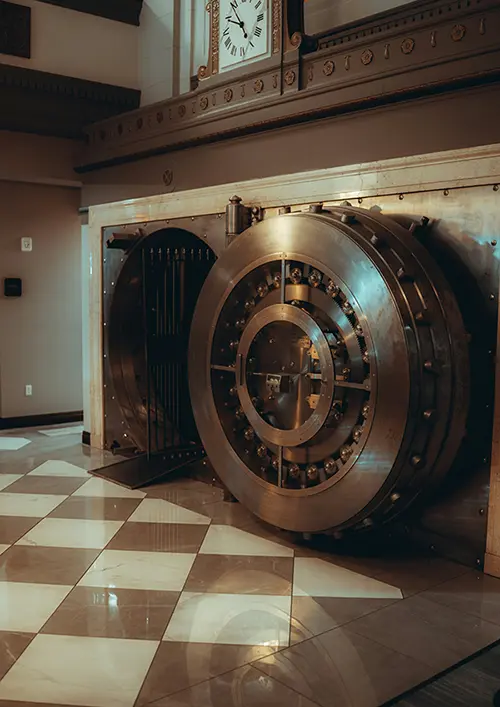
Related Posts


